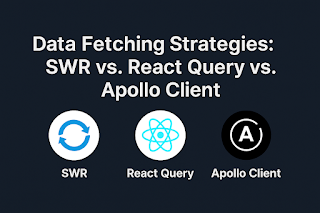Understanding API Gateway: Benefits & Best Practices
As modern applications continue to evolve, especially with the rise of microservices, API Gateways have become an essential component in managing, securing, and scaling APIs. But what exactly is an API Gateway, and why is it so important?
What is an API Gateway?
An API Gateway is a server that acts as an intermediary between clients and backend services. Instead of interacting directly with various microservices, clients send requests to the API Gateway, which then routes those requests to the appropriate service, collects the responses, and sends them back to the client.
In simpler terms, it’s the single entry point for all client requests in a distributed system.
Key Benefits of Using an API Gateway
1. Centralized Routing
The API Gateway handles all incoming API requests and knows exactly which service to forward them to, reducing the complexity for the client.
2. Improved Security
Security concerns like authentication, authorization, rate limiting, and IP whitelisting can be enforced centrally at the gateway level, reducing the burden on individual services.
3. Load Balancing & Caching
Gateways often support load balancing and response caching, improving performance and distributing traffic efficiently.
4. Protocol Translation
Need to expose REST APIs while backend services use gRPC or SOAP? API Gateways can manage this transformation easily.
5. Monitoring & Analytics
You can monitor traffic, identify bottlenecks, and gather metrics through logging and analytics provided by most API Gateway solutions.
6. Service Aggregation
In microservices, a single client request might require data from multiple services. API Gateways can aggregate these responses and deliver a unified result.
Common API Gateway Tools
- Amazon API Gateway – Fully managed and scalable.
- Kong – Open-source and cloud-native.
- NGINX – Powerful gateway with robust traffic management.
- Apigee (by Google Cloud) – Rich features for enterprise API management.
- Zuul (by Netflix) – Popular in microservice architectures.
Best Practices for Using API Gateway
- Keep Gateway Logic Lightweight Avoid adding business logic in the gateway. Its job is orchestration, not computation.
- Implement Rate Limiting & Throttling Protect backend services from traffic spikes or abuse by setting usage limits.
- Secure Your APIs Use OAuth2, API keys, or JWTs to ensure only authorized users access the endpoints.
- Use Caching Wisely Cache static or rarely changing responses at the gateway to improve performance.
- Monitor & Log Everything Gateway-level logs are invaluable for debugging, analytics, and tracking usage.
- Fail Gracefully Ensure that gateway errors or downstream service failures return user-friendly messages.
Real-World Use Case
Imagine an e-commerce platform with microservices like products, orders, users, and payments. Without a gateway, the frontend must manage multiple endpoints. With an API Gateway, all frontend calls go through a single endpoint, simplifying communication and enhancing security, monitoring, and response time.
Final Thoughts
API Gateways are no longer optional—they're a necessity in today’s distributed, cloud-native applications. They enable scalability, observability, and simplicity in managing complex microservices-based systems.
Whether you’re building a startup app or an enterprise-grade platform, leveraging an API Gateway is a smart move that pays off in the long run.
#APIGateway #Microservices #WebDevelopment #DevOps #BackendArchitecture #CloudComputing #APIs #Kong #NGINX #SoftwareEngineering #DeveloperTools #APIManagement




Comments
Post a Comment